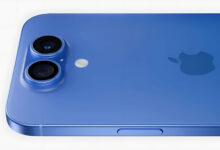
The time it takes to tell similar shades and colors apart can depend on the words you use to describe them.
Research has repeatedly shown that languages with very different terms for differentiating between colors and shades, such as the Russian words siniy and goluboy for light blue and dark blue, are faster at recognizing these colors than languages with different adjectives, such as pale and bright or bright. and dark are used to describe.
However, some questions about how the brain detects color remain unanswered; Like whether color recognition skills are modifiable or whether the brain’s use of appropriate language can speed up color recognition or, conversely, make it more difficult or slower.
A new study from the Norwegian University of Science and Technology (NTNU) and the University of Oslo in Norway has found evidence that the language our brains use to process our surroundings at any given moment affects how other cognitive activities make sense.
Mila VolchanovaNTNU linguist, believes that the way the environment is processed in the brain also affects the perception of colors. He says: “This [یافته] of this [ایده] “It supports that the language we use can influence the way we perceive colors, and that this link is highly dynamic and dependent on activation in the brain.” In other words, the words we use can shape the way we experience colors, and this association is constantly changing based on our brain activity.
In the study, a group of 106 volunteers from Lithuanian speakers, Norwegian speakers and Norwegian-speaking Lithuanians underwent a series of tests.
All three groups performed two tests to measure the speed of recognition of different shades of blue. One experiment was conducted in relative silence, and in the other they had to memorize eight digits. Bilingual participants first heard the numbers in Lithuanian and then in Norwegian. A third experiment was then conducted in which participants were timed on how long it took them to identify a shade of color.
Like Russian, Lithuanian has two words for blue (žydra for light blue and žedra for dark blue), while Norwegian has only one word to describe blue (blå). As previous studies have shown, bilingual volunteers were able to distinguish between different shades of blue faster in Lithuanian than in Norwegian. Monolingual Lithuanians also notice color differences faster than monolingual Norwegians.
Your language shapes your understanding of the world
Bilinguals continued to perform faster when the brain was memorizing a string of numbers in Lithuanian, but not when they heard the numbers in Norwegian.
Aquila Cinquechitcomputer scientist at Northeastern University, London, says: “Research shows that the language actively used by bilingual people can significantly affect their perception of color. “The findings show that the language you use can shape the way you perceive the world, down to the basic perception of color.”
While many of us may take color perception for granted because our brains do everything at once, the ability to distinguish colors is very important. Colors have meaning; From the red of a warning sign to the black on a moldy banana, both are warnings.
Recent findings increase our knowledge of language and cognition and how the brain is trained by speaking. According to Volchanova, language can shape and influence the way we think and categorize information, and at the same time, our cognitive abilities and the way we organize our thoughts can influence the language we use.
The research is published in Language Learning.









